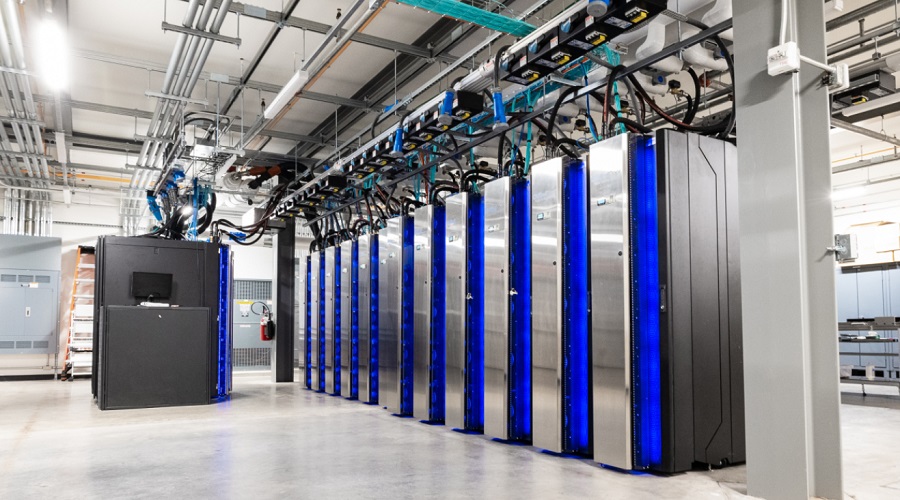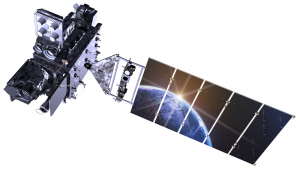
Following up on a commitment to upgrade made in February 2020, the National Oceanic and Atmospheric Administration (NOAA) inaugurated the nation’s newest weather and climate supercomputers with an operational run of the National Blend of Models at 8 am ET this morning. The new supercomputers are expected to provide a significant upgrade to the computing capacity, storage space, and interconnect speed of the nation’s Weather and Climate Operational Supercomputing System.
The twin Hewlett Packard Enterprise Cray supercomputers, called Dogwood and Cactus, are named after the flora native to their geographic locations of Manassas, Virginia, and Phoenix, Arizona, respectively. They replace NOAA’s previous Cray and IBM supercomputers in Reston, Virginia, and Orlando, Florida. The computers serve as a primary and a backup for seamless transfer of operations from one system to another.
Each supercomputer operates at a speed of 12.1 petaflops, three times faster than NOAA’s former system. Coupled with NOAA’s research and development supercomputers in West Virginia, Tennessee, Mississippi and Colorado, which have a combined capacity of 18 petaflops, the supercomputing capacity supporting NOAA’s new operational prediction and research is now 42 petaflops.
The systems upgrade was made possible through a contract made in 2020 with General Dynamics Information Technology (GDIT). According to GDIT, Dogwood and Cactus are currently ranked as the 49th and 50th fastest computers in the world by TOP500. The TOP500 project ranks and details the 500 most powerful non-distributed computer systems in the world. The project was started in 1993 and publishes an updated list of the supercomputers twice a year.
“Accurate weather and climate predictions are critical to informing public safety, supporting local economies, and addressing the threat of climate change,” said U.S. Secretary of Commerce Gina M. Raimondo. “Through strategic and sustained investments, the U.S. is reclaiming a global top spot in high-performance computing to provide more accurate and timely climate forecasts to the public.”
“This is a big day for NOAA and the state of weather forecasting,” said Ken Graham, director of NOAA’s National Weather Service. “Researchers are developing new ensemble-based forecast models at record speed, and now we have the computing power needed to implement many of these substantial advancements to improve weather and climate prediction.”

With the latest generation of GOES-R series of weather satellites now in service and this new supercomputer upgrade functional, Weatherboy asked Graham what else is needed to be upgraded to improve the accuracy of weather and climate forecasts to the public.
“Data,” Graham succinctly replied. As the “starting point” for the models, Graham said it was essential to get good data into the models to get good accuracy out of them. Describing his recent experience as Director of the National Hurricane Center, Graham described at how new streams of accurate data improved forecasts there. Hurricane Hunter data into the models is one example, Graham said. “Aircraft data has made significant improvements to track and intensity forecasts of hurricanes.”
“More computing power will enable NOAA to provide the public with more detailed weather forecasts further in advance,” said NOAA Administrator, Rick Spinrad, Ph.D. “Today’s supercomputer implementation is the culmination of years of hard work by incredible teams across NOAA — everyone should be proud of this accomplishment.”
Enhanced computing and storage capacity will allow NOAA to deploy higher-resolution models to better capture small-scale features like severe thunderstorms, more realistic model physics to better capture the formation of clouds and precipitation, and a larger number of individual model simulations to better quantify model certainty. The end result is even better forecasts and warnings to support public safety and the national economy.
The new supercomputers will enable an upgrade to the U.S. Global Forecast System (GFS) this fall and the launch of a new hurricane forecast model called the Hurricane Analysis and Forecast System (HAFS), slated to be in operation for the 2023 hurricane season pending tests and evaluation. The new supercomputers will also allow for NOAA’s Environmental Modeling Center to implement other new applications created by model developers across the U.S. under the Unified Forecast System over the next 5 years.